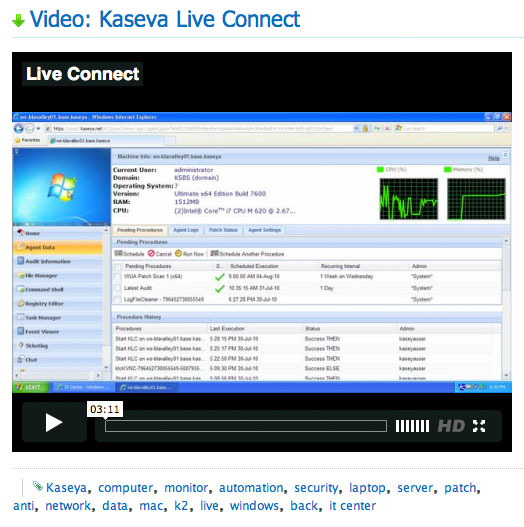Enterprise Social
Telligent Transforms Social Communities Across the Enterprise

Although social communities have been around for years, businesses are still struggling with the challenge of properly accessing and engaging with their users and customers. To help those businesses, Telligent set out to provide the tools necessary for building and maintaining customer relationships through social communities, not only so organizations can build a better business, but also so that they can better serve their customers.
We spoke with Telligent CEO, Patrick Brandt, about the company’s vision, where social enterprises are headed, and how organizations are using Telligent to change the world.
How was Telligent founded and what inspired the birth of the company?
![]()
WEBSITE: www.telligent.com
FOUNDED: 2004
LOCATION: Dallas, TX; London, England; Redmond, WA
CUSTOMERS: Dell, Microsoft, P&G, Adidas
What do you think sets Telligent apart from other companies in the social space?
One of the things that we believe is that social should not be a new destination. Companies tend to create new systems, giving users just one more place where they have to keep track of, conversations, data, and information. We not only deploy our software; but we also advise companies that social is just a new way of doing business, and they should be able to take the social experience across their infrastructure and be able to integrate it with their existing systems.
As a company the way we really differentiate ourselves is that we are maniacally focused on delivering a great customer experience, and it guides us in everything that we do. I think that if you had the opportunity to come to our user group conference where all our customers go to learn more about Telligent, you would be able to see the focus that Telligent employees have on making our customers raving fans of Telligent and our product offerings.
Going back to your earlier point, can you give me examples of companies trying to create new processes for social? How do you feel they’re going about it?
You could leverage social to actually improve processes and communication. One example would be social customer service. There’s a company called Kaseya that’s in the technology market and one of the best things that they can do is provide an online community which is powered by our software that allows their customers to engage with each other on best practices and ways to support each other. It also allows the company to engage with those customers in a familiar one to one relationship, much like you would get in Facebook or LinkedIn. They can also look at the interactions and the information that comes out, which helps them drive new product strategies and new market opportunities. It’s helping them power an online customer community that lets them deliver a core service of customer support, but they get so much additional benefit out of it by leveraging social to complement traditional support like call centers and ticketing systems.
What kinds of challenges do you see companies coming up against when trying to implement social strategies, and how can businesses overcome those challenges?
Companies right now are having to face this big transition to mobile and tablet devices, so a typical worker today probably has three different devices that they’re taking to the office. What’s different now from ten years ago is that these aren’t company issued, so there’s just this big schizophrenia in the number of devices that have to be served. I, as a worker, want to do my job on whichever device that I’m on, and I want to be able to integrate with whatever system I need to. That’s kind of the effect of all these different devices.
What we see our customers doing is leveraging our product, which is a social platform, to give people the opportunity to deploy on multiple devices yet have a very enterprise safe and secure product or platform that also integrates with some of their existing infrastructure. So you can be on your iPad and still access a lot of the work product and work streams that you need to in a secure environment, but still interact in the way that you’re used to from a social experience.
As far as your customer base goes do you think that there is an ideal customer for Telligent and what would that customer look like?
We believe that social is the new normal and everybody’s going to need to use it. This ability to engage socially is going to be a lot more about how people interact. Our ideal customer likes to leverage our software to build an online community or engage with their employees, or typically companies that have a large customer base that they’re trying to engage in either best practices, marketing activities, or customer feedback. With Telligent, they can close the loop on how the customer is experiencing their product, if the customer needs help, what they’re doing to get that help, and how companies can improve their product on the next round based on customer feedback.
For you personally, what do you feel is the most exciting thing about what Telligent is doing?
I think one thing that’s really amazing about what our technology is doing is the global appeal that it has and some of the problems that it’s helping to solve. There are things like the Department of Defense using our software for first responders of catastrophes. When the earthquake in Haiti happened, that’s how they organized all the first responders; so just the fact that our software is being used in such a powerful way is kind of humbling when you think about it.
Another example is Oxfam, which is one of the world’s most well known non-profits, and the great work that they’re doing with the help of our software to leverage their fundraising base. Locally we have Susan G. Komen, which does such great work to raise awareness about breast cancer, they’re all leveraging our software. So we’re not just pedaling software and trying to just grow our business. It’s actually making a human impact on the world, and that’s very exciting and personally rewarding.
Changing tracks a little bit, where do you see the evolution of social software on the enterprise level headed? Do you anticipate any major shifts in the landscape?
I think we are still in the first or second innings in the penetration of social in the enterprise. There’s a lot of stats out there, and I don’t really have them handy, but it’s less than ten percent actually that have access to an enterprise social collaboration platform today. What I think is going to happen is it’s going to take a while for that to truly get the penetration to where it’s more than just a new tool or toy for some people to engage and play with.
What we’ve done, which we think is different and transformational even in our own industry, is leverage the social infrastructure in very specific business-use cases. As we see more of those types of problems being solved with online communities and enterprise social networks, I think you’ll see the penetration being much greater. Clearly people are taking it very seriously because you’re seeing some of the more traditional software companies add social to their marketing material, or as a feature to some of their legacy applications. I think that just shows that that group believes that there’s really a market here, but I’m not sure it shows that they’re serious about reengineering their business and their products. I do think that you’re going to see more and more people make investments in how social can solve business problems; and from that standpoint, at Telligent we feel very bullish about how we’re positioned in that market and how we’re actually solving business problems and delivering enterprise-grade social software.
My final question is who do you think are the most interesting people or companies in the social software world right now and why?
As I think time goes on in the next eighteen, twenty-four, thirty-six months, not only are you going to see more specific business cases, but you’re also going to see ways that people leverage social and vertically specific industries or process specific solutions. One of my favorite examples is a partner of ours called ePals. What they’ve done is they’ve taken and leveraged our social platform and built out a fantastic education product that leverages community. If you think about it, the young people of the world today are growing up with social and mobile, and they’re going to interact with their peers, teachers, parents, etc. in the social world. So the fact that ePals is leveraging a community software platform to build an application that’s going to be leveraged for education is going to show you how this social infrastructure can be transformational in a very big and broad way. They’ve signed up millions of users already, and they have great engagement because this is the way people are used to engaging. I think you’re going to see some big things from a company like ePals.
You can learn more about Telligent at their website, or by taking a look at the product pages for Telligent Enterprise, Telligent Community, and Telligent Analytics here at Business-Software.com.








